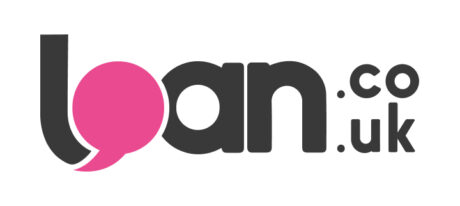When looking at loans you have two main options: secured loans and unsecured loans. The difference between them is simple but important.
A secured loan uses your property as a guarantee.
An unsecured loan doesn’t.
This one difference affects everything – from the interest rate you’ll pay to how much you can borrow and what happens if you can’t repay.
Understanding which type suits your situation could save you thousands of pounds and help you avoid unnecessary risks.
This guide explains how both types work, when to choose each one, and what you need to know before applying.
Understanding Secured Loans
A secured loan, also called a second charge mortgage, uses your property as collateral, or security.
This means the lender can recover their money by selling your asset if you can’t repay. Think of it like your mortgage – the house secures the debt, giving the lender confidence to offer better terms.
When you take a secured loan, the lender registers a ‘legal charge‘ against your property with the Land Registry.
This doesn’t mean they own part of your home. You’ll still live there and own it outright, but the lender has a debt that must be settled before you can sell.
Why Lenders Prefer Security
This arrangement explains why lenders offer much better interest rates and flexibility on secured loans.
They’re taking less risk because they have a way to recover their money even if your circumstances change. The property acts as insurance for them, and they pass this benefit on through lower rates and higher borrowing limits.
Most homeowners can borrow against any property they own – your main home, a buy-to-let investment, or commercial premises.
The key requirement is having sufficient equity (the difference between what your property’s worth and any existing mortgage debt).
Types of Secured Loans Available
Homeowner Loans are the most common choice for personal borrowing. These let you borrow £25,000 to £500,000 against your property for any purpose, from home improvements to debt consolidation.
Bridging Loans offer short-term secured finance, popular with property investors who need to complete purchases quickly. These work well for auction properties or breaking chains, with amounts from £100,000 upwards.
Unsecured Loans Explained
Unsecured loans rely purely on your creditworthiness and ability to repay, without requiring any asset as security.
This means they are available to homeowners and those that rent, live at home etc.
Lenders assess your application based on your credit history, income, and existing commitments.
How Credit Scoring Works
Credit scoring plays a huge role here.
Lenders use systems to evaluate your past borrowing behaviour, from mortgage payments to mobile phone contracts. They’re looking for patterns that suggest you’ll repay on time.
A strong credit score opens doors to better rates and higher borrowing limits.
The Speed Advantage
Without having extra security (your home), unsecured lenders charge higher interest rates on their loans to compensate for the increased risk.
However, this comes with a major advantage: speed.
Many unsecured loans can be approved within hours and funds transferred the same day, compared to weeks for secured alternatives.
Legal Protections
The Consumer Credit Act provides strong protections for unsecured borrowing.
You get a 14-day cooling-off period to change your mind, and Section 75 gives additional protection for credit card purchases between £100 and £30,000.
These same safeguards don’t exist for secured lending, although regulated loans against your home will be regulated by the FCA.
Find a secured homeowner loan with loan.co.uk
Low-Cost Secured Loans Online
Borrow from £15,000 to £1.5 million
Free property valuation
No upfront fees or hidden charges
The Key Differences
Here are five key differences which will affect your choices.
Interest Rates
Secured loans often cost 3% to 5% less annually than unsecured alternatives. A £50,000 loan over 10 years could cost £15,000 more in interest with an unsecured loan. That’s money that could fund a family holiday or home improvements.
Borrowing Amounts
Secured loans can reach £500,000 or more for homeowners with sufficient equity, while unsecured lending rarely exceeds £50,000. If you need substantial funds for major projects, secured borrowing might be your only realistic option.
Repayment Terms
Secured loans offer more flexibility, extending up to 25 years compared to seven years maximum for most unsecured products. Longer terms mean lower monthly payments and better affordability, though you’ll pay more interest overall.
Speed
Unsecured loans can start within 24-48 hours, requiring just credit checks and income verification. Secured loans need property valuations, legal searches, and solicitor involvement, extending the timeline to around 4 weeks.
Risk
Secured loan defaults can lead to repossession proceedings, though lenders must follow strict legal procedures first.
Unsecured loan defaults damage your credit score severely and can result in court judgements, but your home isn’t directly at risk.
Which Type Suits Your Situation?
The right choice depends on four key factors: how much you need to borrow, how quickly you need the money, whether you’re comfortable using your property as security, and your current credit situation.
Secured Loans Work Best When You Need More
If you’re looking to borrow over £50,000, secured loans become almost essential.
Most unsecured lenders cap their loans well below this amount, leaving secured lending as your main option for larger projects.
Secured loans also make sense when you want the lowest possible monthly payments.
Spreading repayments over 20-25 years can halve your monthly outgoings compared to a seven-year unsecured loan, though you’ll pay more interest overall. This flexibility helps if you’re managing other financial commitments or prefer to keep monthly costs low.
Property security can also help if your credit history isn’t perfect.
Lenders often accept borrowers with past credit problems when there’s valuable property backing the loan, though they may charge slightly higher rates to reflect the risk.
Unsecured Loans Suit Speed and Smaller Amounts
When you need £30,000 or less quickly, unsecured loans often win out.
Speed becomes the deciding factor in many situations.
Wedding expenses, car purchases after breakdowns, or emergency home repairs can’t always wait for the lengthy secured loan process.
If you need money within days rather than weeks, unsecured lending provides the solution.
Some borrowers simply prefer avoiding property risk altogether.
Even though unsecured loans cost more, they sleep better knowing their home isn’t on the line. This peace of mind has real value, especially if you’re naturally cautious about debt or have dependants to consider.

Making Your Application
Each loan type has its own requirements for documents and verification.
Secured Loan
As a secured loan is basically a type of mortgage, it has the more complex setting up procedure, and also takes the longest.
Behind the scenes there are conveyancing checks and Land Registry amendments, plus property assessments and valuations.
You will still need to prove your income and affordability but secured lenders often show more flexibility and tolerance. Good property security can sometimes offset weaker credit profiles.
Unsecured Loan
Here, applications are very streamlined and focus heavily on automatic credit scoring and income verification.
Lenders perform detailed affordability assessments, examining bank statements and existing commitments. The process moves faster because there’s no property evaluation or legal work required.
What can you use a secured loan for?
The companies that offer secured loans are pretty relaxed about why you might need a loan. Good reasons are: home improvement, debt consolidation, new car etc.

Could a Further Advance Be Better?
Before choosing between secured and unsecured loans, consider a third option that many borrowers overlook: borrowing more against your existing mortgage through a further advance.
What’s a Further Advance?
A further advance lets you borrow additional money from your current mortgage lender, secured against the same property.
Instead of taking a separate loan with a new lender, you take out a second mortgage with the lender you have now. This has the advantage of not altering your main mortgage, including the interest rate deal.
Further advances often offer the cheapest borrowing rates, when compared to secured or unsecured loans.
Not all lenders offer further advances.
Your lender will reassess your affordability using current lending criteria, which may be stricter than when you first got your mortgage. If your circumstances have changed or lending rules have tightened, you might not qualify.
A mortgage broker can compare all your options: further advances, remortgages, homeowner loans, and unsecured lending. They’ll calculate the true cost of each option over your preferred term.
Read more: Second charge vs further advance
Why a Mortgage Broker Adds Real Value
Brokers provide access to better deals and specialist knowledge that saves both time and money.
Independent mortgage brokers work with over 100 lenders compared to the handful you’ll find on comparison websites.
Many specialist lenders don’t deal directly with consumers, only accepting applications through professional intermediaries. This hidden market often contains the most competitive rates.
Brokers will help most with second charge loans, they understand which lenders accept different employment types, credit histories, or property situations. They can match your specific circumstances to the right lender first time, avoiding multiple applications that damage your credit score.
Your Next Steps
The choice between secured and unsecured lending depends on your specific situation, risk tolerance, and borrowing needs.
Secured loans offer better rates and higher amounts but require property as security, so you must be a homeowner with equity.
Unsecured loans provide speed and simplicity without risking your home, though at higher cost.
Frequently Asked Questions
A secured loan uses your property as collateral, like a mortgage, meaning the lender can repossess it if you don’t repay. An unsecured loan relies solely on your creditworthiness with no asset at risk. This fundamental difference affects interest rates, borrowing amounts, and application processes.
Technically, yes, your property is at risk if you default on a secured loan. However, lenders must follow strict legal procedures and exhaust other recovery options first. Repossession is always a last resort, and you’ll receive multiple warnings and opportunities to resolve the situation.
Secured loans can reach £500,000 depending on your property equity and income, while unsecured loans rarely exceed £50,000. Most personal loans cap at £25,000-£35,000, though some lenders offer higher amounts to borrowers with excellent credit profiles.
This depends on your circumstances. Secured loans may accept weaker credit scores because property provides security. However, unsecured loans have simpler applications with faster decisions. Both require affordability assessments under FCA regulations.
Not necessarily a ‘good’ credit score. While good credit helps secure better rates, property security can offset poor credit history. Many secured lenders accept borrowers with past credit problems, though they may charge higher interest rates.
Most secured loans allow any legal purpose: home improvements, debt consolidation, business investments, or major purchases. Some bridging loans have specific property-related purposes, but homeowner loans offer complete flexibility in how you use the funds.



